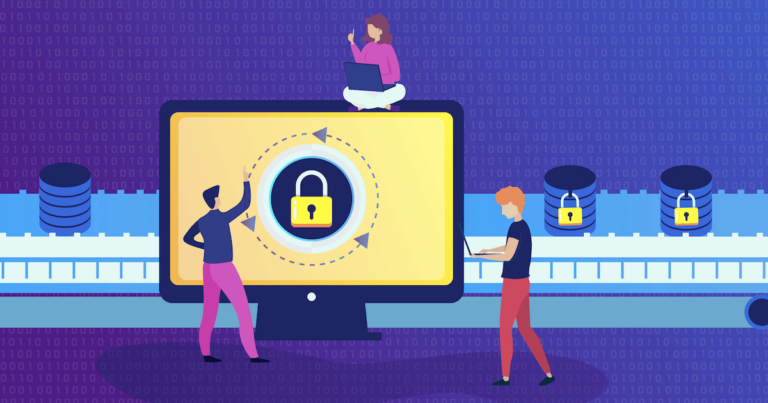A company could have a threat in many ways, or its security could be breached by anyone, including an employee, former employee, contractor, business associate, or other organization members who have access to critical data and IT systems. Even the ids and identities of a current employee could be tweaked to enter within a premise; therefore could cause harm to the business. These threats can be managed by implementing operational security using policies, procedures, and technologies. Operational security principles help companies prevent privilege misuse or the damage it can cause, and the best practices help minimize the risk of compromised sensitive data.
How Does Operational Security Work?
Operational security (OpSec) is a method of accessing security and risk management within a firm to prevent sensitive information from getting into the wrong hands. OpSec helps identify apparently innocuous actions that could unintentionally reveal critical or delicate information to a cyber-criminal. IT and security professionals use both a process and a strategy to see their operations and systems from the outside in. It incorporates insightful exercises and processes like behavior monitoring, web-based media monitoring, and security best practice.
Statista states, “Security services revenue is expected to show an annual growth rate (CAGR 2022-2027) of 8.43%, resulting in a market volume of US$129.30bn by 2027.”
A crucial role of operational security or OpSec is using risk management practices to find likely dangers and vulnerabilities in the company’s processes, how they operate, and the software and hardware their employees use. Looking at systems and operations from the perspective of competitors or enemies helps identify weaknesses. It enables OpSec professionals to work on system vulnerabilities and threats that may have been ignored and are crucial to executing the appropriate countermeasures to keep the company’s most sensitive data secure.
Minimize The Risk Of Threat Using Proven OpSec Steps
While you think your organization is extremely secure and locked down with all the cutting-edge controls at all levels, you should keep checking on the following five operational security best practices to ensure better security control solutions.
1. Identify Critical Information
Identify and then classify all your organization’s sensitive data, such as product research, intellectual property, financial statements, and customer and employee information. Classifying your business data based on their significance and cruciality helps you create a clear guideline for what data needs extra protection and what is general information. Once the data identification is complete, you can define the security parameter for different segments of company data at different levels. If you are done identifying your company’s critical information, move to the next step.
2. Analyze Threats
Analyze potential threats. What kind of threats are available that need identification? Also, be aware of third parties, including competitors, trying to steal your company’s data. Intellectual property always remains a prime focus among competitors. Additionally, watch out for insider threats like careless professionals and displeased workforce. The internal workforce represents every organization’s weakest link, and their inappropriate act causes more loss to the company than external threats. For example, it’s not like that an employee purposefully wants to do harm to a company, but an inappropriate usage of a company’s resources or negligence could lead to threats such as phishing attacks. You must have a strong and reliable operational security mechanism to respond to the behavior.
3. Analyze Vulnerabilities
Keep looking for security loopholes and other vulnerabilities within your system. Assessing all your current preventive measures is important. Besides that, also determine if any dark spots exist that may be exploited to gain access to the sensitive data. If it is so, you must replace the loopholes as the priority to stay out of the hands of hackers. For instance, updating or patching operating system security helps avoid system vulnerabilities, hence the respective loss.
4. Assess Risk Factors
Develop a security risk assessment checklist for all your assets. Use the checklist to evaluate the level of risk associated with each vulnerability. It helps you rank your loopholes using the following factors;
- Possibility of attack
- How much damage you would suffer
- The amount of work and time you need to recover
- Understand that the higher the chance of an attack and the more damaging it is, the more you should prioritize minimizing the associated risk.
5. Apply Countermeasures
Having a countermeasure strategy such as the OpSec strategy helps in several ways. It allows you to be ready with a plan to eliminate risks and mitigate threats. In order to keep you proactive in your security posture, OpSec guides you to update your hardware, create and implement new policies, and train employees on newly executed security patrol services. Just keep your countermeasure practices clear and simple for better results.
Final Thoughts
Operational security or cloud security operation has become more important than ever in the post-pandemic world. Having an advanced security posture throughout the organization is crucial to prevent breaches from all endpoints. Operational security practices ensure that security and IT operations teams work together to rapidly and intelligently predict and address security concerns, especially in supporting a largely remote workforce that makes detection and prevention more difficult. Managed security services, security outsourcing, or consulting are some options availed by small and enterprise organizations to boost operational security throughout the organization.
Read more about the importance of endpoint security in an enterprise.




